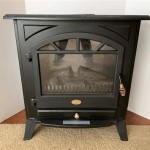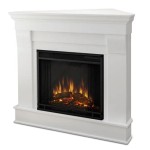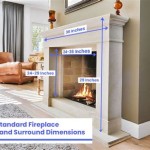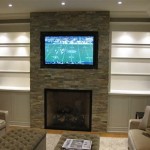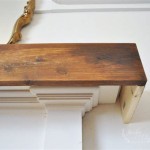Fireplace Log Holders: Functionality, Aesthetics, and Selection
Fireplace log holders, often overlooked, are essential accessories for any functional and aesthetically pleasing fireplace setup. They serve to organize, store, and display firewood, simultaneously enhancing the convenience of tending to the fire and contributing to the overall décor of the hearth area. This article explores the various aspects of fireplace log holders, including their types, materials, advantages, and considerations for selection.
Functionality and Purpose
The primary function of a fireplace log holder is to keep firewood neatly organized and readily accessible. Loose logs scattered around a fireplace can be unsightly and present a tripping hazard. Log holders provide a designated space for firewood, preventing such disorganization and streamlining the process of adding fuel to the fire. Furthermore, elevating the logs off the floor through the use of a log holder facilitates air circulation, which is crucial for drying the wood. Properly dried wood burns more efficiently, producing less smoke and creosote buildup in the chimney. The convenience of having firewood readily available at the hearth also encourages the consistent enjoyment of the fireplace during colder months.
Beyond the basic function of storage, some log holders incorporate additional features. Some designs include tool sets, such as pokers, shovels, and tongs, to facilitate fire tending. Others may have integrated kindling storage compartments, further consolidating the necessary fireplace accessories in a single, organized unit. The inclusion of such features can significantly enhance user convenience and make the fireplace experience more enjoyable.
The size and capacity of a log holder are directly related to its functionality. A small log holder might suffice for occasional fireplace users, while those who rely on their fireplace as a primary heating source will require a larger capacity holder. Choosing the appropriate size is crucial to balance functionality with available space in the hearth area.
Properly designed log holders also contribute to safer fireplace operation. By containing the firewood and preventing logs from rolling or falling, they minimize the risk of accidents. This is particularly important in households with children or pets, where the potential for injury from loose logs is higher.
Types and Materials
Fireplace log holders are available in a wide array of styles, materials, and designs, catering to diverse aesthetic preferences and functional needs. Understanding the different types of log holders and the properties of various materials is essential for making an informed purchase decision.
One fundamental distinction is between indoor and outdoor log holders. Indoor log holders are typically crafted from materials such as wrought iron, steel, brass, or wood, often with an emphasis on aesthetic appeal. Outdoor log holders, on the other hand, prioritize durability and weather resistance. Materials like powder-coated steel, heavy-duty canvas, or treated wood are commonly used for outdoor applications to withstand exposure to rain, snow, and sunlight.
Within the category of indoor log holders, several variations exist. Simple log racks are basic frames that hold the logs in a neat stack. These are often the most affordable option and are suitable for smaller fireplaces or occasional use. Log carts, equipped with wheels, offer increased mobility, allowing users to easily transport firewood from storage areas to the hearth. Log carriers, typically made of canvas or leather, are designed for carrying smaller quantities of firewood. Andirons, while technically not log holders in the traditional sense, serve to elevate the logs within the firebox, improving airflow and combustion. Log holders with tool sets combine firewood storage with integrated fireplace tools, providing a convenient and organized solution for fire tending.
The choice of material significantly impacts the durability, aesthetics, and maintenance requirements of a log holder. Wrought iron and steel log holders are known for their strength and longevity. They can withstand heavy loads and resist warping or bending. Brass log holders offer a touch of elegance and sophistication, but may require more frequent polishing to maintain their shine. Wood log holders provide a rustic and natural aesthetic but may be more susceptible to moisture damage and insect infestation, particularly if used outdoors. Powder-coated finishes on metal log holders provide an added layer of protection against rust and corrosion, extending their lifespan.
The construction of the log holder also plays a crucial role in its stability and performance. Sturdy welds, reinforced joints, and a well-balanced design are essential for ensuring that the log holder can safely support the weight of the firewood without tipping or collapsing. Some log holders feature decorative elements, such as scrollwork, embossed patterns, or custom finishes, adding visual interest to the hearth area.
Considerations for Selection
Selecting the right fireplace log holder involves carefully considering several factors, including the size of the fireplace, the volume of firewood typically used, the available space in the hearth area, the desired aesthetic, and the budget. A well-chosen log holder should not only be functional and durable but also complement the overall décor of the room.
The dimensions of the fireplace opening are a primary consideration. The log holder should be appropriately sized to fit comfortably within the hearth area without obstructing the firebox or posing a safety hazard. Measure the width, depth, and height of the hearth before making a purchase to ensure a proper fit. Also, consider the typical length of the firewood being used. If the logs are longer than the log holder, they may overhang and create a safety risk.
The volume of firewood that the log holder can accommodate is another important factor. If the fireplace is used frequently as a primary heating source, a larger capacity log holder is necessary to minimize the need for frequent refills. Conversely, if the fireplace is only used occasionally, a smaller log holder may suffice. Consider the frequency of fireplace use and the amount of firewood typically consumed to determine the appropriate capacity.
The available space in the hearth area and the surrounding room is a significant constraint. In smaller rooms, a compact log holder that tucks neatly into a corner may be the best option. In larger rooms, a more substantial log holder can serve as a focal point and enhance the overall décor. Consider the layout of the room and the existing furniture to determine the optimal placement and size of the log holder.
The aesthetic of the log holder should complement the style of the fireplace and the overall décor of the room. Whether the style is rustic, modern, traditional, or contemporary, choose a log holder that harmonizes with the existing design elements. For example, a wrought iron log holder with intricate scrollwork may be well-suited for a traditional fireplace, while a sleek steel log holder with clean lines may be a better fit for a modern fireplace. The finish of the log holder should also be considered. Black, bronze, and brass finishes are common choices, but custom finishes are also available to match specific color schemes.
Finally, consider the budget when selecting a fireplace log holder. Prices can range from relatively inexpensive for basic log racks to more expensive for elaborate log holders with integrated tool sets or custom finishes. Establish a budget before beginning the search and prioritize the features that are most important. Keep in mind that a durable and well-made log holder can last for many years, making it a worthwhile investment.
Proper maintenance is essential for prolonging the lifespan of the log holder. Regularly clean the log holder to remove ash, soot, and debris. Inspect the welds and joints for signs of damage and repair as needed. Apply a protective coating to metal log holders to prevent rust and corrosion. Store wood log holders indoors during periods of inclement weather to prevent moisture damage. By following these simple maintenance tips, the log holder can remain functional and aesthetically pleasing for many years to come. Careful consideration of these factors will contribute to a selection that ensures both practical functionality and desired aesthetic appeal.

Industrial Fireplace Log Holder Pottery Barn

The Best Firewood And Log Holders Architectural Digest

The Best Firewood Racks That No Cozy Hearth Is Complete Without Storage Indoor Fireplace Accessories Rack

Livingandhome Round Iron Log Storage Firewood Rack Fireplace Holder Black 63cm Diy At B Q

Willow Fireplace Log Holder Screen Set West Elm

Fireplace Wood Log Rack Indoor Firewood Holder With Wheel China Outdoor Made In Com

Broe Antler Fireplace Log Holder Pottery Barn

Pleasant Hearth Harper 4 Piece Log Holder And Fireplace Tool Set Fa338lt The Home Depot

10 Best Indoor Firewood Storage Ideas 2024

11 Best Firewood Racks 2024 Our Top Picks

